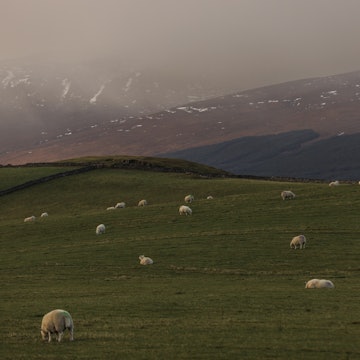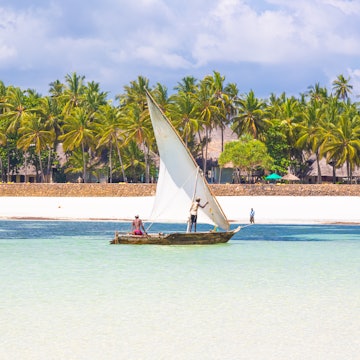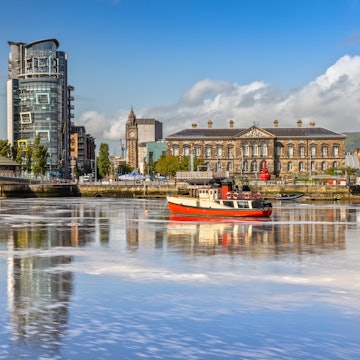

The scenery is stunning on Mt Kenya, and you may have the views almost entirely to yourself © WanderingNomad / iStock Photo
Writer Peter Elia headed to Mount Kenya in search of a less crowded alternative to Kilimanjaro. He and his companions found they had Africa's second-highest mountain completely to themselves.
Shivering is part of life on Mt Kenya, especially at 2:45am at high altitude. As I removed my glove and guided my numb hand to my head torch, I could now see what lay ahead – a jagged massif of volcanic rock and a steep climb to a far-off summit.
Having come to Kenya to ascend this 5199m (17,057ft) mountain, I was anxious to start the climb, and my body was crying out for the warmth that movement would bring. The eerie silence was broken by the sound of scree rattling menacingly down the mountain face and the faint echoes of laughter from a pack of hyenas.
"We should have gone to Kilimanjaro instead," I joked to my trekking guides as they emerged confidently from our hut. But their optimism allowed me to tentatively begin to imagine the impending African sunrise, three miles above the Equator.

Africa's highest summit, Kilimanjaro or “Kili” as it's affectionately known, had been my original choice for an East African adventure. After all, what is the point in tackling Africa's second-highest mountain when you can stand proudly on the very top of the entire continent? However, Kili is famous – and where there is fame, there will always be crowds.
For me, a large number of people on a hike defeats the purpose. On a previous climb up to Britain's highest peak, Ben Nevis in Scotland, I felt more like a customer than an adventurer. Adventure isn't something you can guarantee, but you’re less likely to find it by following the crowds.
In addition, Mt Kenya seemed like an exciting proposition – a hike where wildlife roams freely across a diverse, forbidding landscape. So when a friend of mine asked me to join him and two companions to climb it, I decided to forgo the Kili bragging rights, and wholeheartedly agreed to the ascent of Kenya's highest peak.
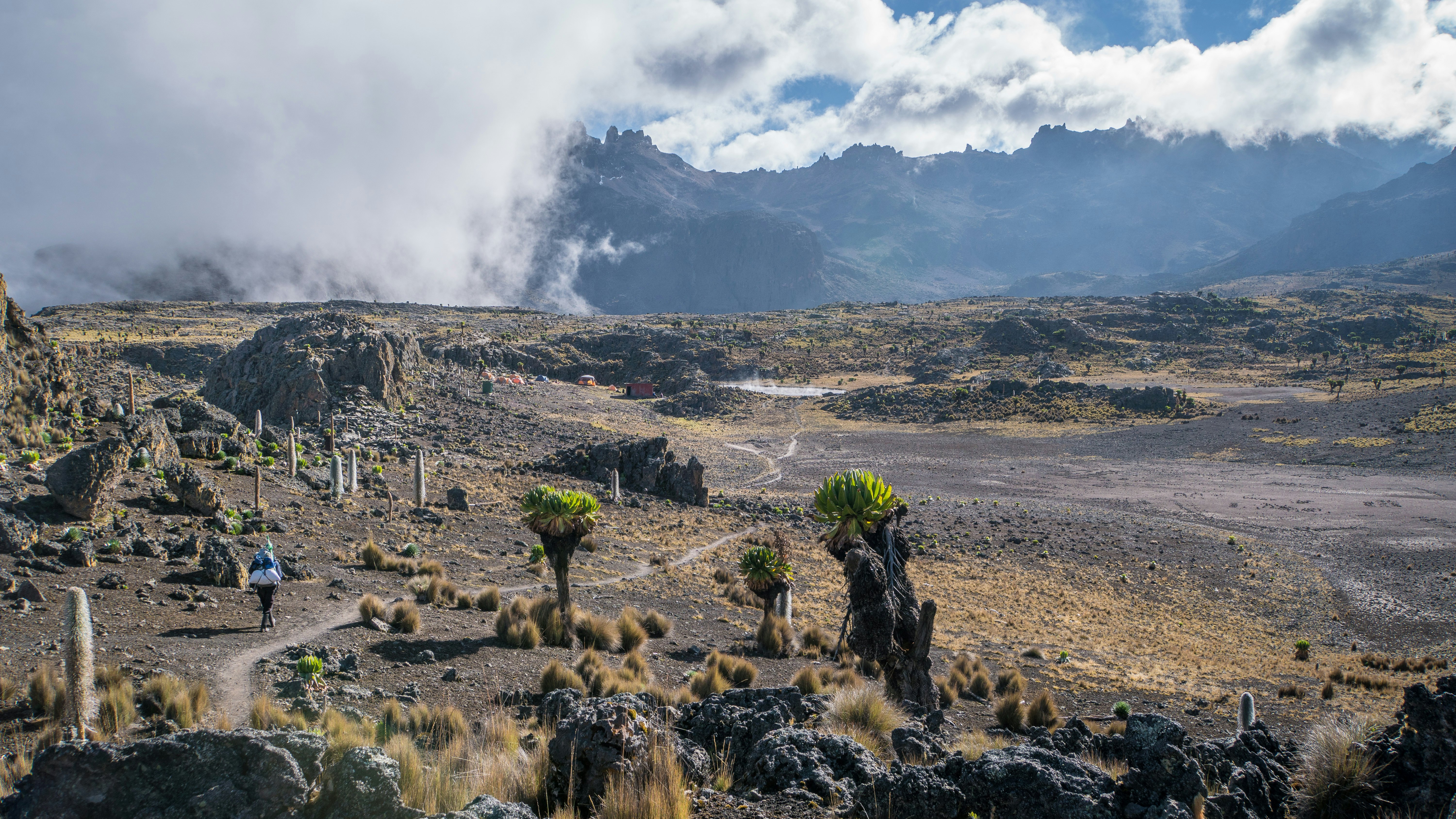
Embracing solo travel in Kenya
I decided to travel from London to Nairobi a week earlier than the rest of the group. Unfortunately, just as I arrived in Kenya, I learned that new Covid travel restrictions back home in England meant the others could not join me.
My emotions moved from panic to disbelief to disappointment. Still, I was in Kenya and I was looking for adventure, so I contacted Benson Njoroge (aka Ben) of Trek Mount Kenya, our proposed hiking guide, to convince him to revive the trip. "How many people are coming with you?" asked Ben. "Just me," I replied, hopefully.
In non-pandemic times, a solo hiking trip would have cost a small fortune. However, we both acknowledged our desire to make this trip work in these unprecedented times, so a compromise was reached: I upped my financial offer and Ben cut his trekking crew down to three. I couldn't believe it. From the despair of finding myself on a group trip without a group, I now felt like a lottery winner.

Crisscrossing the Equator
I left Nairobi the next day in the pouring rain with Ben; Joshua, who would be sorting out the logistics and gear; and Samir, who would keep us nourished through the hike. In Kenya, I was told, you get there when you get there, and it quickly became clear that our drive to the beginning of the trek was going to take much longer than Google Maps’ prediction of three hours.
But long journeys make for good introductions. We got to know each other as we inched through the Nairobi traffic. Hours later, at a roadside photo-op – a sign marking where the Equator cuts through the country – I learned that our hike through Mount Kenya National Park would be weaving in and out of both hemispheres.

At Sirimon Park Gate, the starting point of our three-day adventure, we signed the rangers’ registration book, which I noticed was completely blank. In all the world, there was not a single soul who would be trekking in the park except for us.
The empty page was an embodiment of the toll the pandemic has taken on the tourism industry here. In between reflections on all the livelihoods affected by the pandemic, another thought emerged: if no one else was in the park, who would hear our cries for help if something went wrong?
The first day’s hike was a gradual introduction to the mountain, teasingly revealing its beauty. Mt Kenya is a collection of sculptured peaks and ridges that are the result of eons of erosion.
Tarns glistened in the high-altitude sun, sitting at the bottom of U-shaped valleys. The terrain varied hour by hour, from rolling heather-coated slopes to dense stands of bamboo and tropical rainforest. Before I knew it, we had arrived at Old Moses Camp, a group of tin shacks with bunk beds. Samir had gone ahead to cook a huge portion of chicken and vegetable pasta before we headed to bed for an early night.

As the sun rose the following morning, we climbed steadily through the dusty lowlands into primeval forest. The further we walked into the national park, the more personal our conversations became. "My old boss never paid me,” said Ben, as he recounted his days starting out as a porter. "After months without pay and relying on tips, I vowed to set up my own company one day."
It was plain to see how his struggles had bred empathy: he really cared about his staff and he didn't want them to go through difficult times as he did, a tall order in the middle of a pandemic.
We may have been the only four humans hiking here, but we were not alone. Although animal numbers have declined significantly due to decades of poaching, with the help of Joshua, we spotted many footprints along the trail, including those of hyenas, leopards, and elephants.
At one point, Joshua shushed the group, directing our attention to a hissing sound coming from a nearby shrub. Joshua cleared the surrounding foliage to reveal a chameleon resting on a branch.

Our second night’s accommodation was at Shipton's Camp, which resembled an old army barracks that had seen better days. Mountain buzzards soared directly above us, and sunbirds hopped around the scattered rocks encircling our dormitory. The tranquility of the scene made me feel at ease about the next day’s summit climb.
But before long, the birds disappeared and heavy gray clouds moved in. Mt Kenya suddenly looked menacing. I wondered if I would hold my nerve for the final push.

Early birds catch the sunrise
I'm a morning person – but getting a 2am alarm call at 4300m (14,000ft) above sea level is a lesson in character-building. The altitude had finally hit me. I was thirsty and disoriented as I stumbled out of my creaky bunk bed. I felt like I was waking up after a blurry night out in Vegas.
I consider myself a healthy and capable hiker, but altitude sickness is indiscriminate when it comes to those of us who spend most of our time close to sea level. "You need to drink plenty of water and eat all your breakfast," Joshua said with fatherly conviction. "You'll be fine. No rush," added Ben. They didn't appear to be worried about me; they had seen it all before.

We slowly zigzagged upwards, the way ahead illuminated only by the sharp beams from our head torches. Ben dropped back to my position to announce that Joshua would lead the hike from there as he had more summit experience.
Only then did I learn Joshua's story. He had been a mountain guide leader for many years, worked in the backbreaking lumber trade, and commanded a position as an elder within his community. As I heard this story unfold, cutting through the silence of the early morning, I realized it was the kind of story I likely would not have heard in a group of climbers on Kili.
When our conversation stopped, I noticed the intensity of my heavy breathing and my aching joints. I found myself slowing down as the first shards of light appeared, my eyes fixed on my boots, as if willing them to move. "Turn around!" bellowed Ben suddenly, and I twisted my body 180 degrees and felt a wave of pure joy. The eastern horizon had burst into flames and I was transfixed.
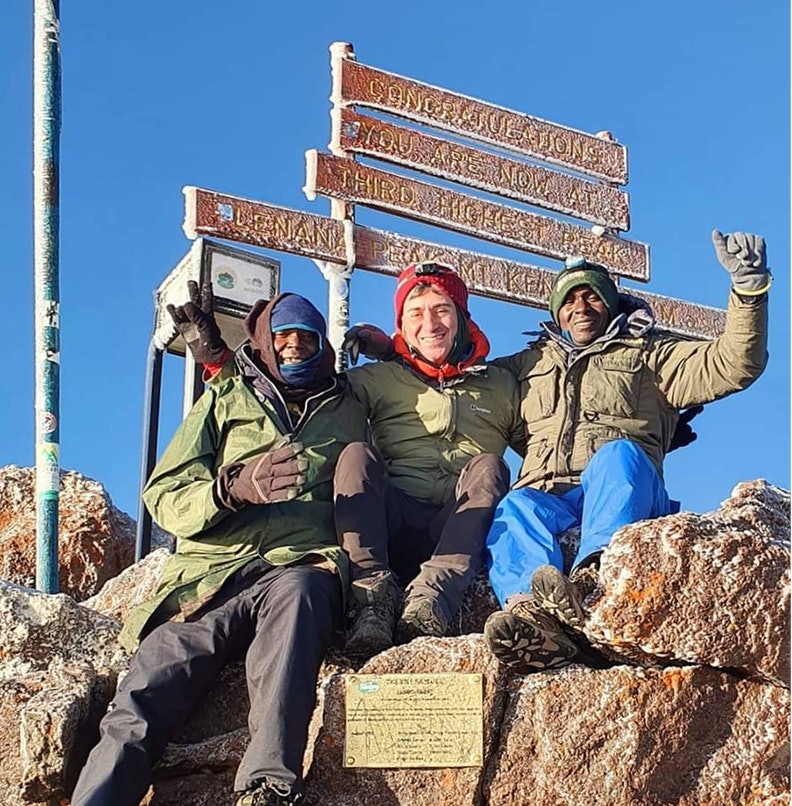
Things hadn’t quite gone to plan. The goal was to watch the sunrise triumphantly from Mt Kenya's peak. But such a checklist-worthy experience would have been out of step with the improvisational nature of this adventure. Catching it when I least expected it – exhausted and lost in my thoughts – was, in its own way, perfect. Not long after sunrise, I reached the summit and we erupted into a chorus of thank yous and congratulations.
As the clouds dispersed to reveal clear blue skies, I pointed to a mountain in the far distance: Kilimanjaro. I could have been there. I wondered if I would have been equally satisfied if I had been standing on that summit looking towards where I was standing now?

A new approach to travel
The knock-on effects of the global pandemic changed the narrative of our trek. In our bubble of isolation, the four of us shared our hopes and fears openly. From falling in love for the first time to concerns for vulnerable family members, we covered a range of topics not commonly broached on your usual hike.
There is something special about hiking away from the crowds. Time slows down, and nature gives a helping hand to calm both mind and body. Besides seeing a stunning corner of the world for the first time, this was a trip that pushed me down new paths of conversation and connection. Whether it was the tallest mountain in Africa or the runner-up was beside the point.











